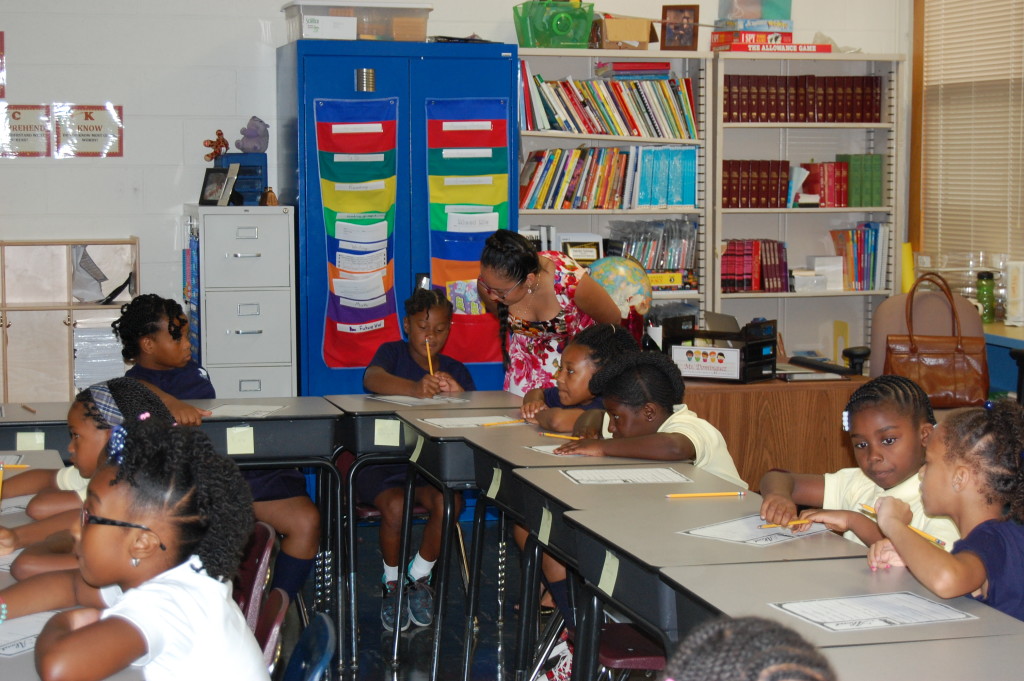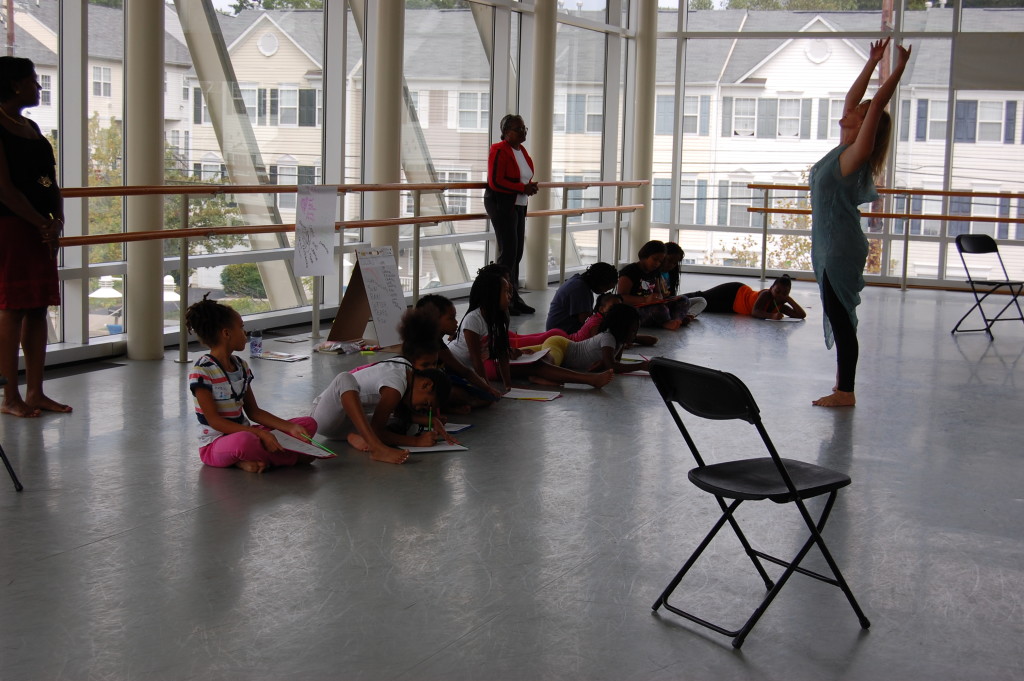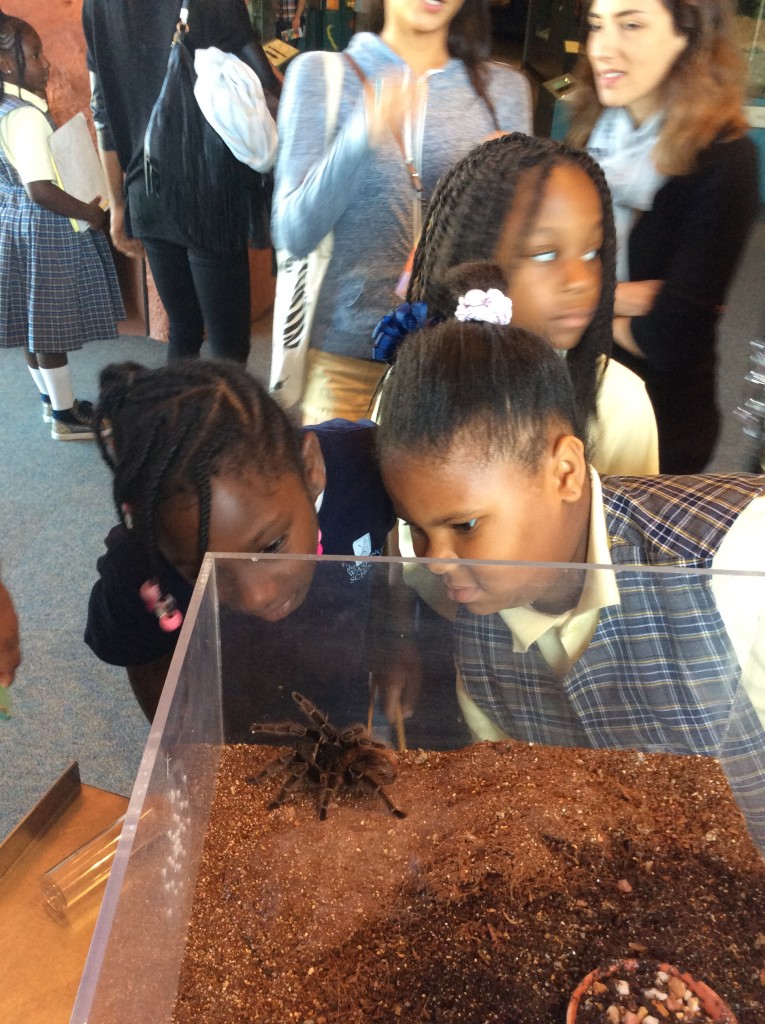The Washington School for Girls in D.C. recently announced their transition to use year-round schooling to close the achievement gap. This comes after years of studying similar models, some of which was supported by their participation in STC’s collaborative programming.

A typical 3rd grade classroom with two qualified teachers who are able to provide support and instruction.
The Washington School for Girls (WSG), an independent all-girls Catholic day school in D.C., announced their decision in November to move forward with the expansion of a year-round school program after a successful pilot with their third grade students. Beginning in July of the 2016-2017 school year, the 3rd through 5th grades will operate on the innovative year-round calendar model. Grades six through eight will complete the full transition during the 2017-2018 academic year.
With the new model, students start school in mid-July and end in June. The traditional summer break is distributed throughout the school year, with students attending 10 weeks of traditional classroom instruction and one week of intersession programming each quarter, followed by a one week vacation. During the quarterly intersession, the girls are offered enrichment programming and remediation which lowers risks of content area loss that commonly occurs over extended break time.

3rd grade students responding to a modern dance routine and writing poetry as inspired by the movement of the dance in first-ever Intersession program, a collaboration with Word Dance Theater. The week-long program brought together writing, dance, music, and visual arts.
The decision was not made lightly. “It came through many strategic planning initiatives. We spoke to all stakeholders: staff, family, alumni, students’ families, and current students,” school principal Brianne Wetzel said. “Third grade started with the balanced schedule and families were very excited about the transition.”
It was at an STC Forum in Harlem where WSG first heard a school speak about a year-round schedule, sparking interest in exploring this alternative calendar model. Later, STC led a roundtable discussion with its D.C. schools at E.L. Haynes, a public charter school and STC member school based in D.C. that has implemented the year-round model since its inception over a decade ago. After the roundtable, WSG and E.L. Haynes were able to connect to discuss year-round schooling. These two schools, despite being in the same city had not interacted because of their different sectors, but now have benefited from cross-sector collaboration to make strides toward quality urban education and closing the achievement gap.
“STC kept us abreast by connecting us with quality schools around the country who sent us plans for professional development, inter-session, and inspired us to be more creative in our approach,” Wetzel said. “Seeing E.L. Haynes have such success with students in our city has been inspiring. Understanding their model has helped us to shape the future of our own program.”
A year-round balanced school year for WSG means a chance to have continuity in learning instruction, structure, a safe place for students to attend school, gains in reading and math, and engagement in dance and the arts.
“We hope to close the achievement gap. We hope students will excel academically, socially, emotionally, and spiritually,” Wetzel explained. “ We believe that this gives them the best opportunities to succeed in high school, college, and beyond. This gives them a chance for a better education and keeps them learning regardless of their circumstance.”

3rd grade students observing a spider at the museum of natural history.
Interestingly, earlier this year the D.C. Public Schools recently announced that, starting next year, 10 public schools will transition to year-round calendars. This work was largely inspired by Jenny Niles, the founder of E.L. Haynes and current Deputy Mayor of Education in Washington, DC.
STC looks forward to seeing how E.L. Haynes (charter), Washington School for Girls (independent, faith-based), and these district schools will share resources and learn from each other, and to continuing to support this powerful cross-sector sharing.
Despite the work that STC does to unite leaders across K-12 sectors and create opportunities for cross-sector collaboration in education, the mission will always remain the same: to expand quality education and close the opportunity and skills gap for the sake of our kids.

